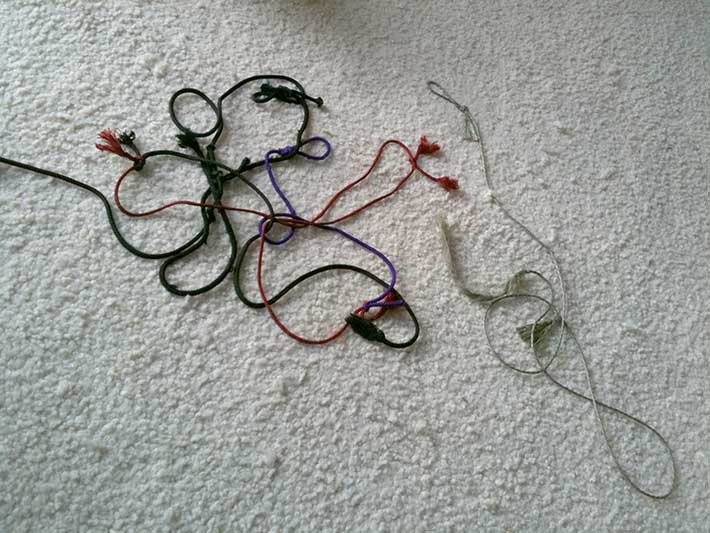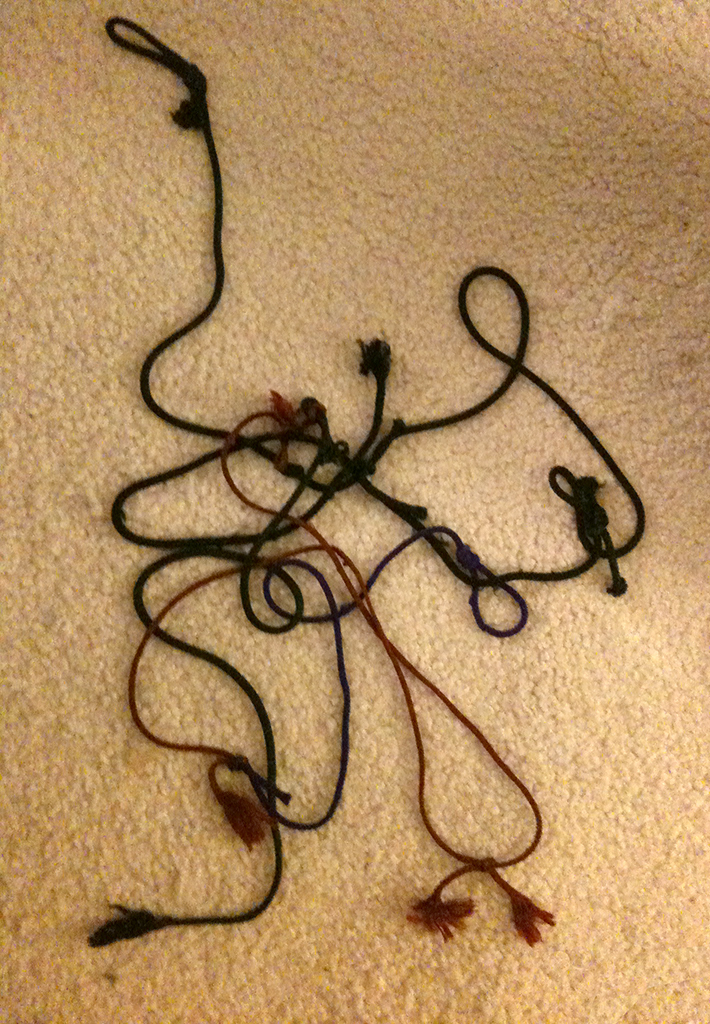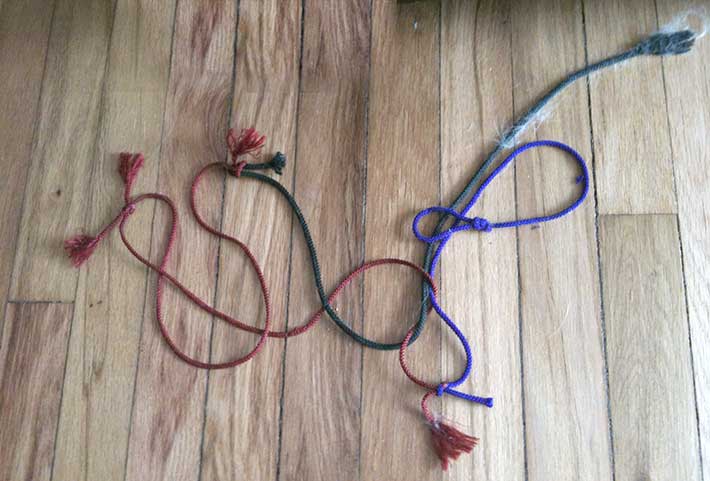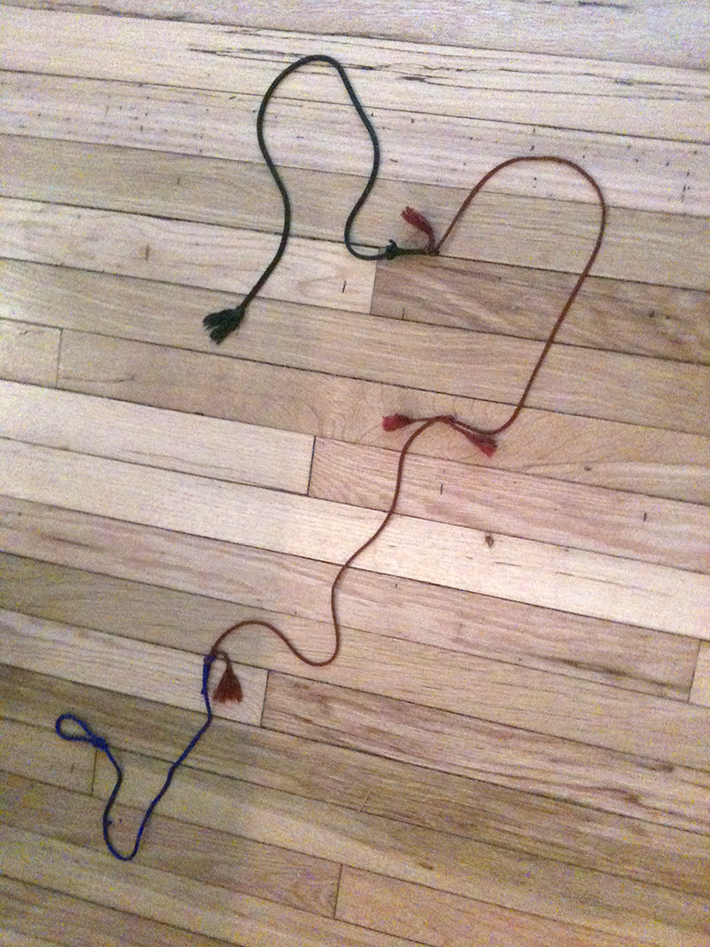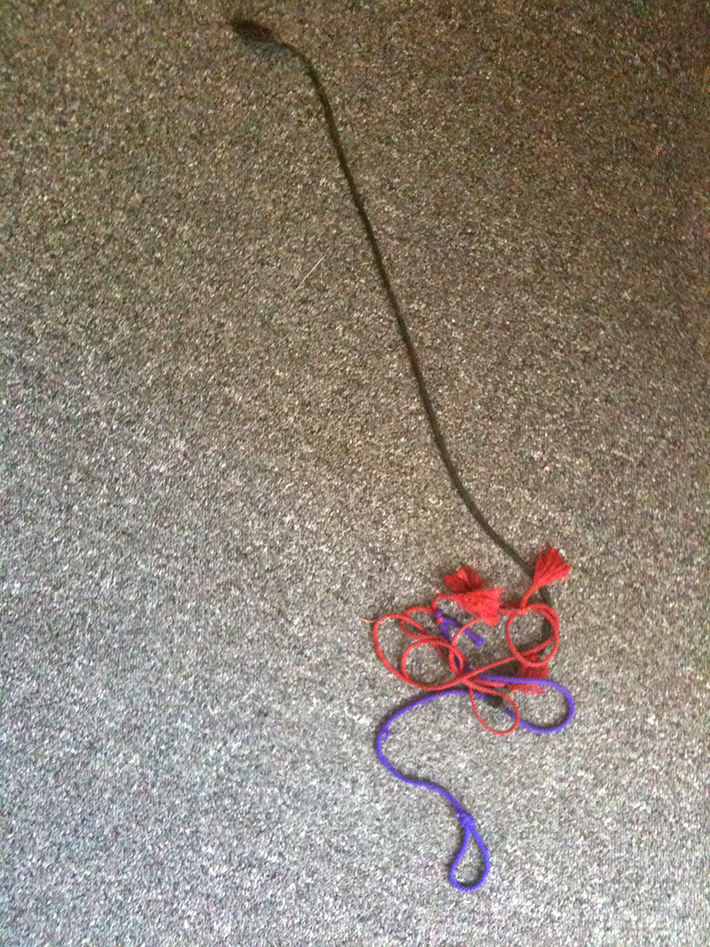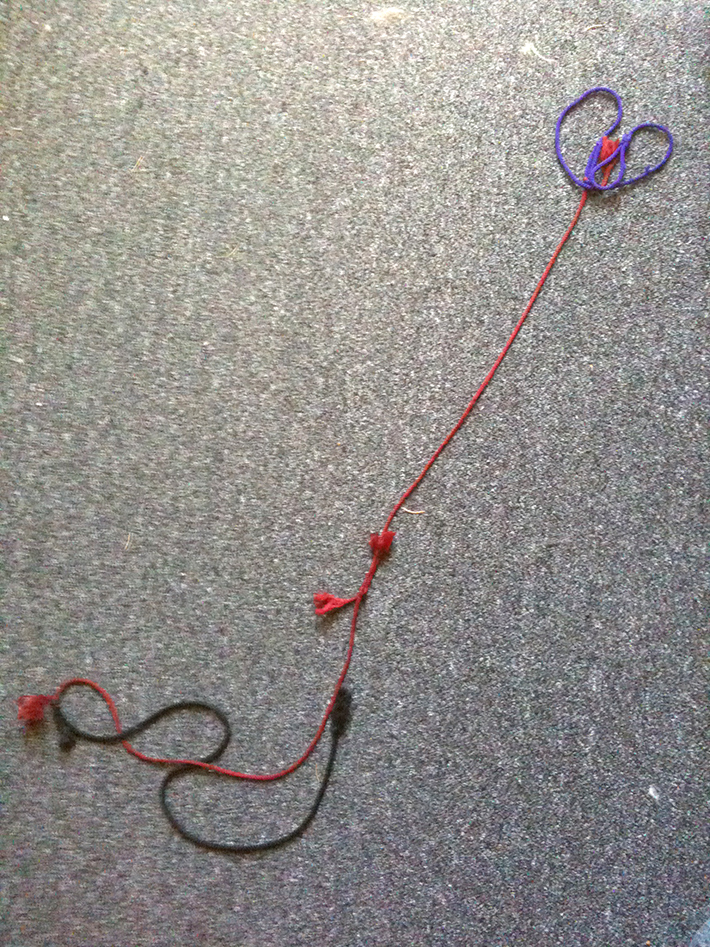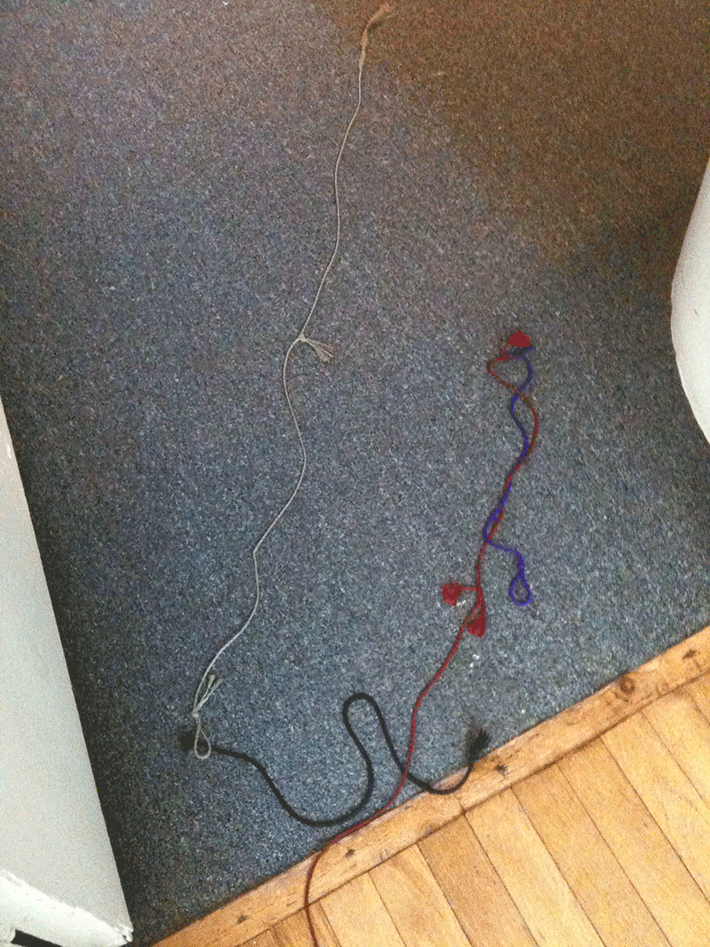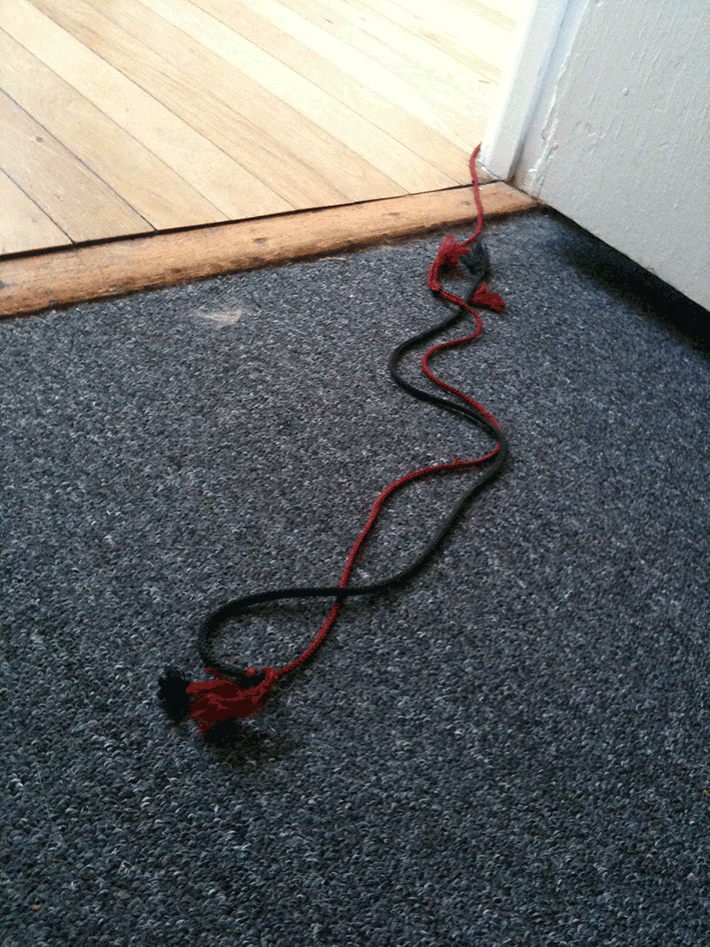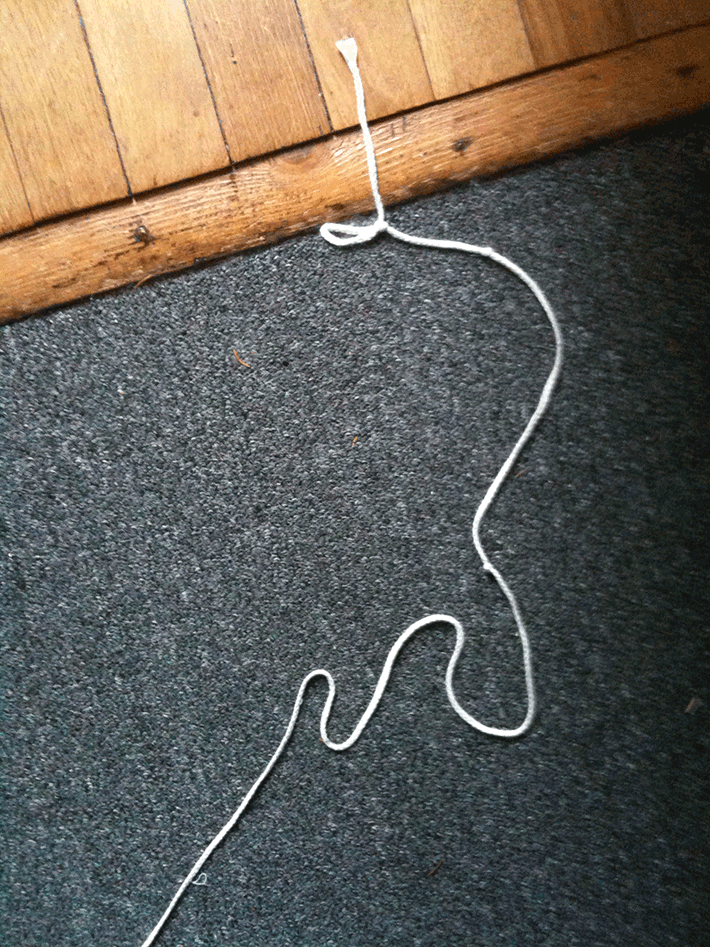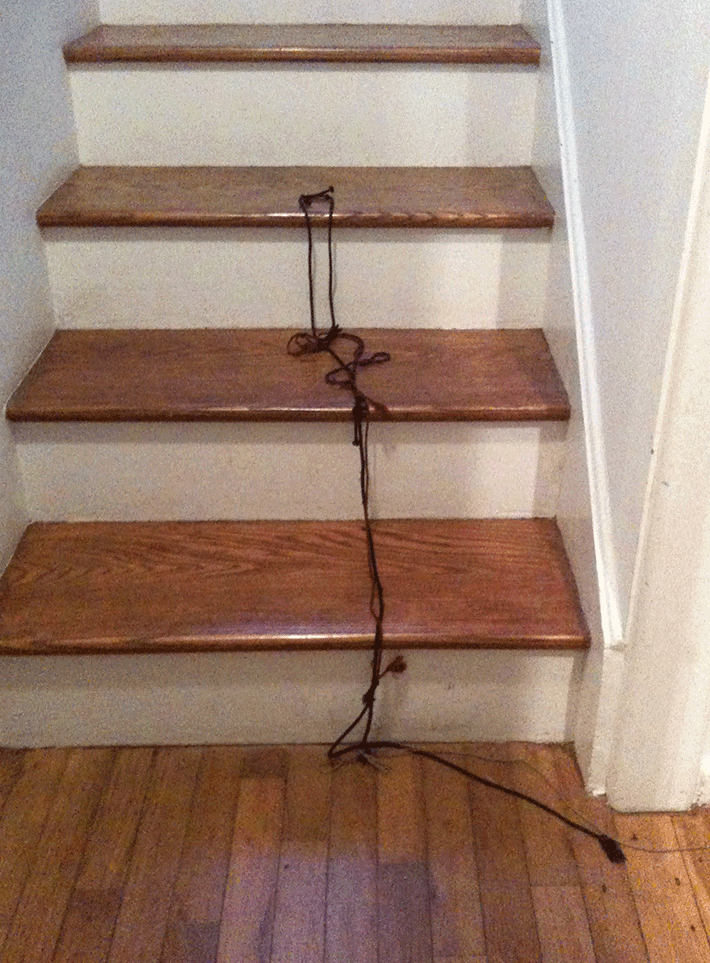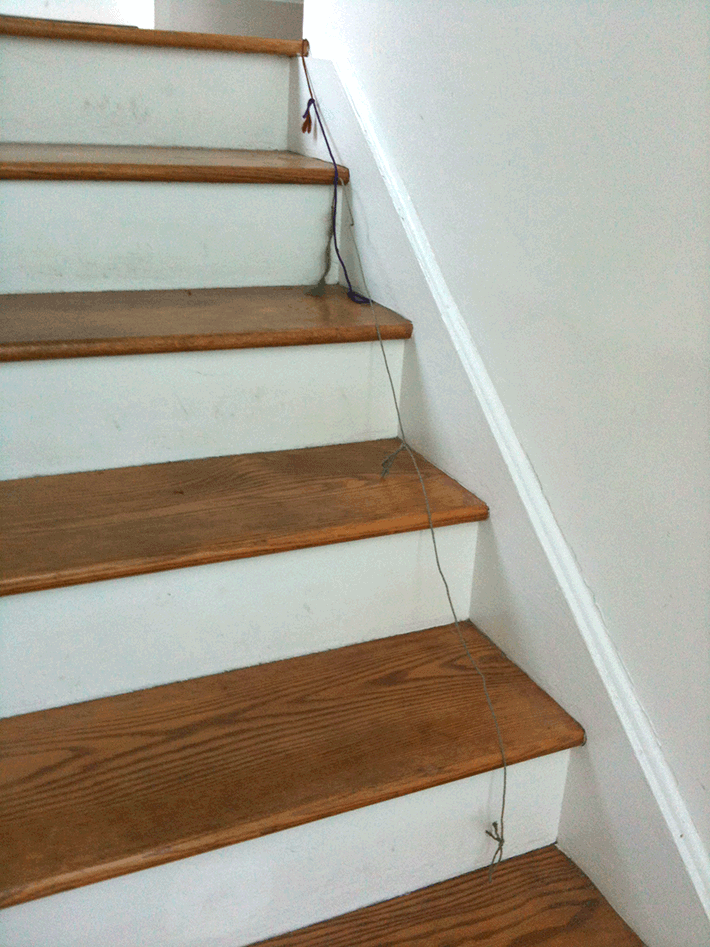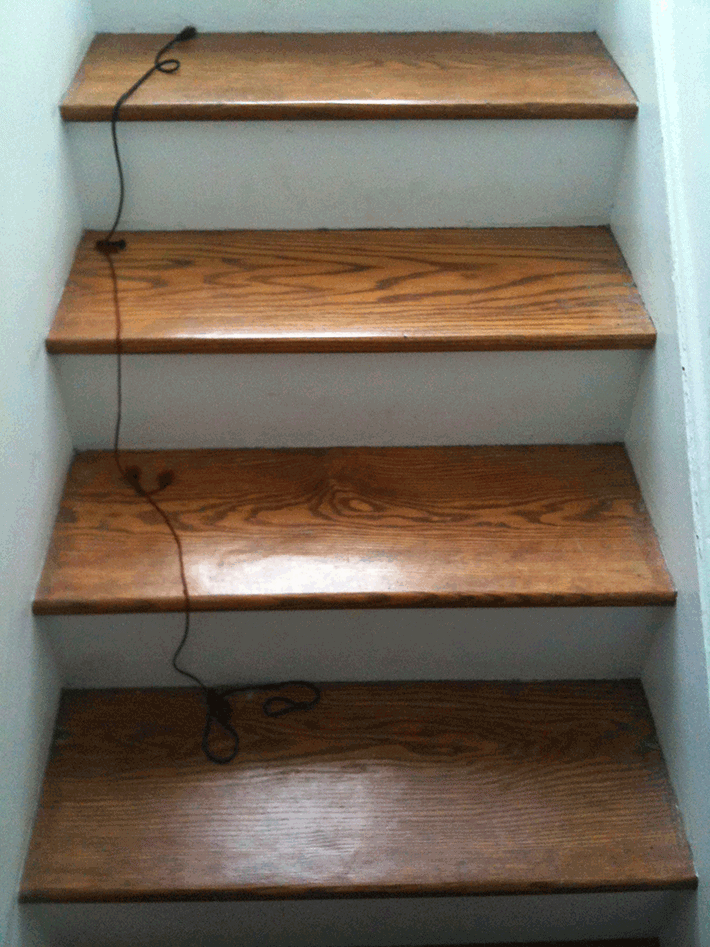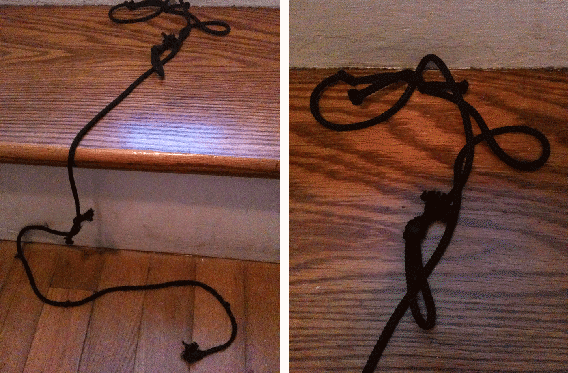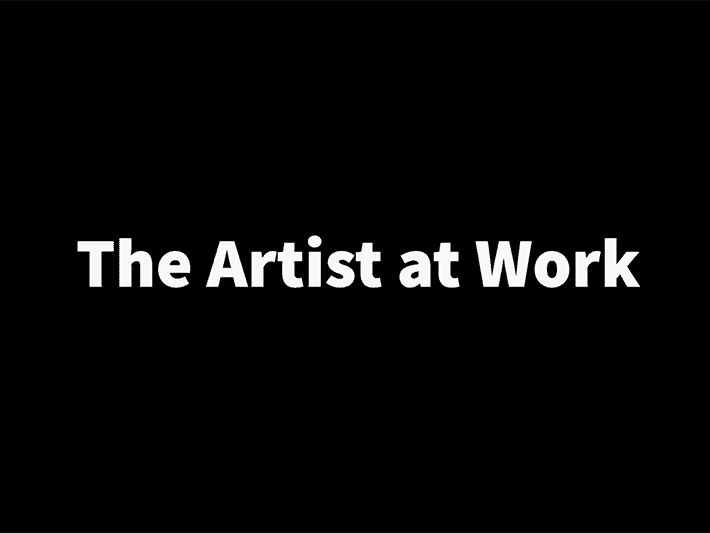We discovered the work of this reclusive artist when she was living near the High Tor area of Rockland County, New York; an area famed for its enclave of artists like illustrator Milton Caniff, playwright Maxwell Anderson and composer Kurt Weill.
Her work has the naturalism of an Andy Goldsworthy and the single-minded adherence to form of a Creek Charlie. These chimerical pieces are emboldened with passion and sustained by an innocence that imbues each piece with a spontaneity and freshness that belies her limited palette, contemplative approach and narrow gestural technique.
We feel “Daphne,” as this one-name artist is called, has much to transmit in her art which emerged mature from her first experiments in the medium. Among these examples, we hope you share our delight in discovering “Daphne” and her insouciant approach to an expressive art form we call “string art.”
— The Authors
These examples of her work (Fig. 1 & 2) are likely to be those best remembered both for their complexity and their studied elegance of form combining disparate shapes or “loops” so characteristic of this, her “Rug Period.”
She combined her experiments on textured surfaces (See Rug Period above) with backgrounds that provide directional energy — a context for her continued pursuit of complex simplicity. Close examination of Fig. 3 shows the only instance of media other than string in its pure form. The “fluff” was likely supplied by the artist herself.
Fig. 5 & 6 show a broadening of her scope, elongating the media giving it the direction that backgrounds supplied in earlier efforts.
Elongation quickly led to her work using the environment to explicate the thrust of her works. In this series (Fig. 7 through 11) we see what critics have dubbed “transcursion” or her “Threshhold Period” which takes her approach into new realms.
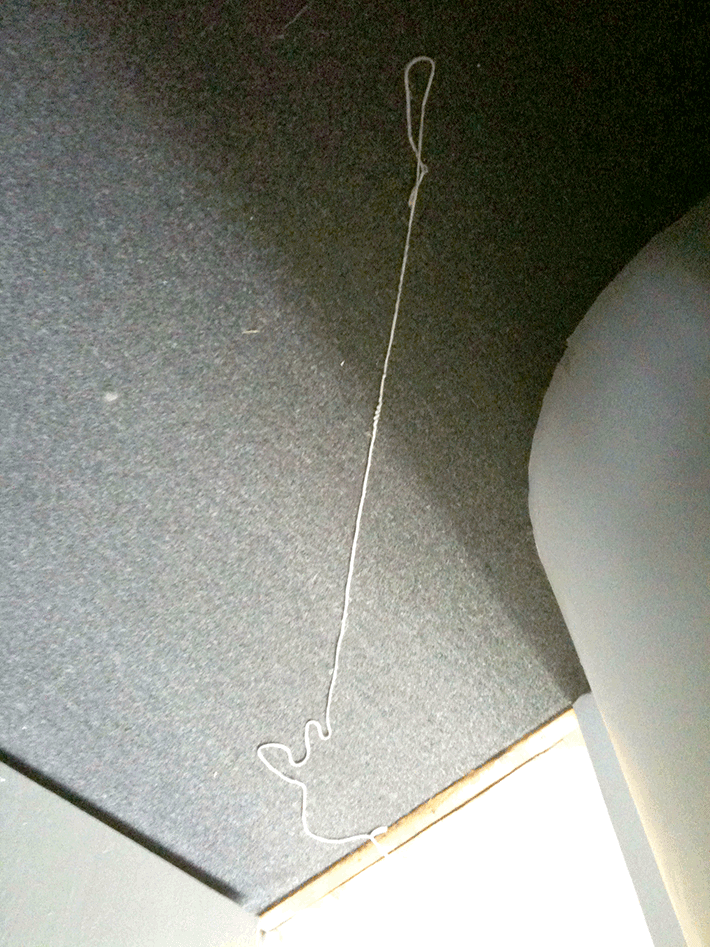
Fig. 11. This study was her only experiment with “Bauhaus-style.” She ultimately gave up pursuing that direction in favor of her next and most profound period.
In the third period of her career, Daphne began adding dimensionalism to her now perfected technique. These examples (Fig. 13-19 ) extend her experiments with elongation while retaining her fondness for the complexity we have called “tangles.”
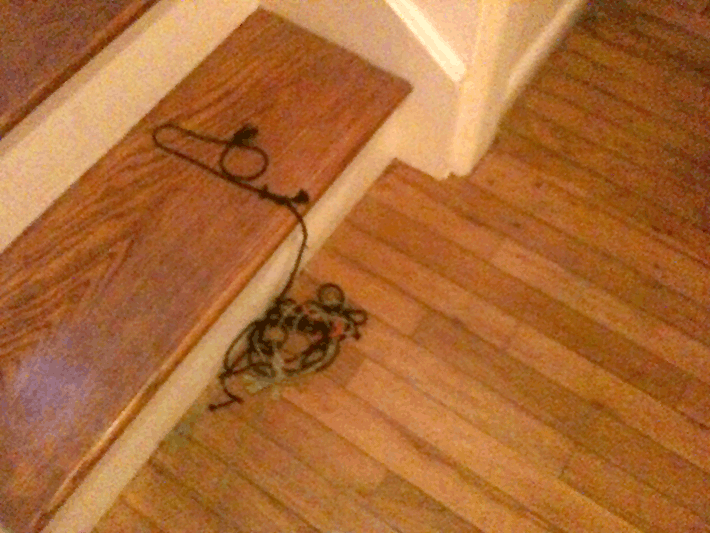
Fig. 12. This archival photo found on an old thumb drive foreshadows Daphne’s next phase, and the culmination of her art, the Stair Period.
In this rare series we see the artist at work.
